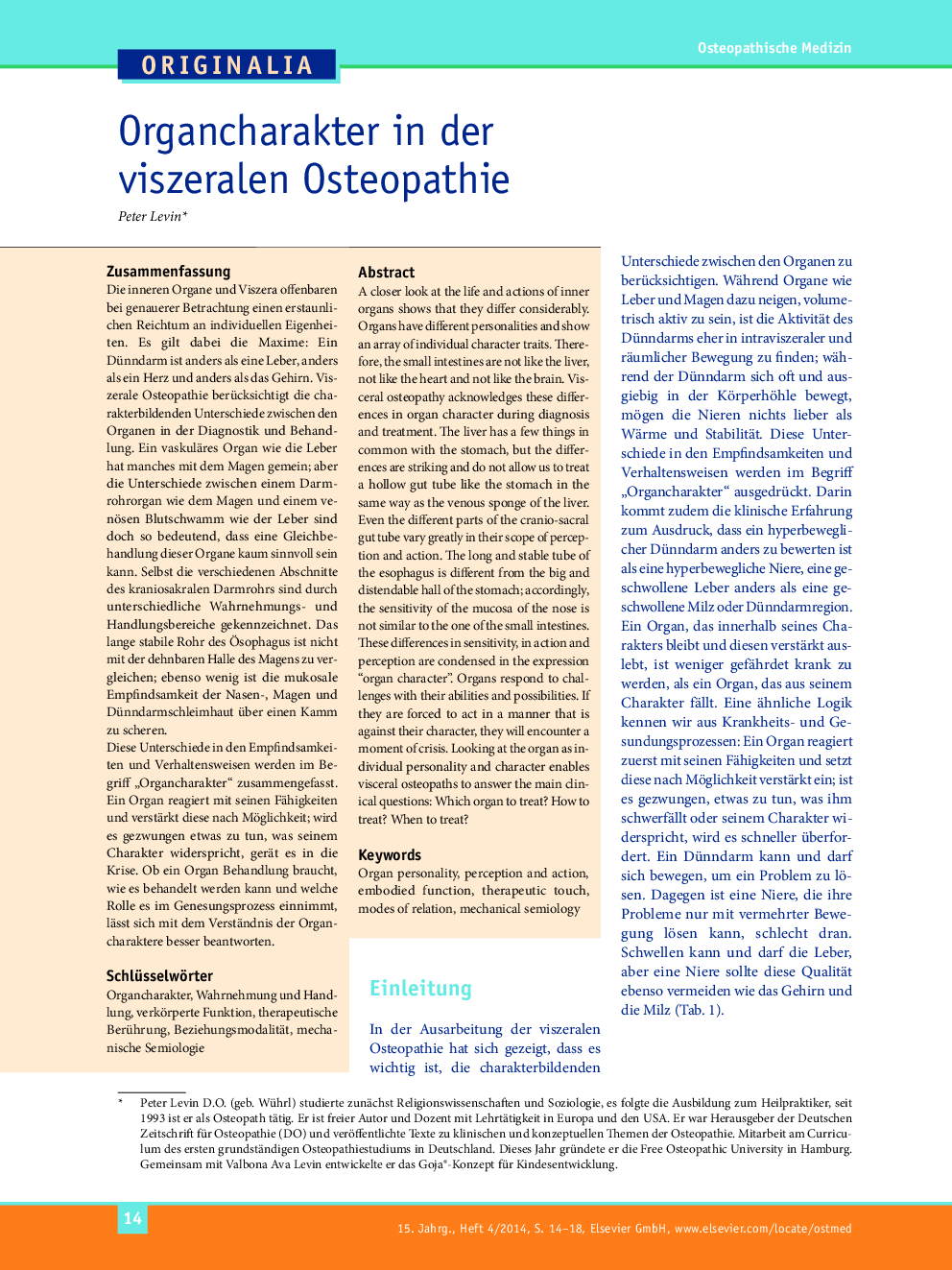| کد مقاله | کد نشریه | سال انتشار | مقاله انگلیسی | نسخه تمام متن |
|---|---|---|---|---|
| 2626137 | 1136019 | 2014 | 5 صفحه PDF | دانلود رایگان |
ZusammenfassungDie inneren Organe und Viszera offenbaren bei genauerer Betrachtung einen erstaunlichen Reichtum an individuellen Eigenheiten. Es gilt dabei die Maxime: Ein Dünndarm ist anders als eine Leber, anders als ein Herz und anders als das Gehirn. Viszerale Osteopathie berücksichtigt die charakterbildenden Unterschiede zwischen den Organen in der Diagnostik und Behandlung. Ein vaskuläres Organ wie die Leber hat manches mit dem Magen gemein; aber die Unterschiede zwischen einem Darmrohrorgan wie dem Magen und einem venösen Blutschwamm wie der Leber sind doch so bedeutend, dass eine Gleichbehandlung dieser Organe kaum sinnvoll sein kann. Selbst die verschiedenen Abschnitte des kraniosakralen Darmrohrs sind durch unterschiedliche Wahrnehmungs- und Handlungsbereiche gekennzeichnet. Das lange stabile Rohr des Ösophagus ist nicht mit der dehnbaren Halle des Magens zu vergleichen; ebenso wenig ist die mukosale Empfindsamkeit der Nasen-, Magen und Dünndarmschleimhaut über einen Kamm zu scheren.Diese Unterschiede in den Empfindsamkeiten und Verhaltensweisen werden im Begriff „Organcharakter” zusammengefasst. Ein Organ reagiert mit seinen Fähigkeiten und verstärkt diese nach Möglichkeit; wird es gezwungen etwas zu tun, was seinem Charakter widerspricht, gerät es in die Krise. Ob ein Organ Behandlung braucht, wie es behandelt werden kann und welche Rolle es im Genesungsprozess einnimmt, lässt sich mit dem Verständnis der Organcharaktere besser beantworten.
A closer look at the life and actions of inner organs shows that they differ considerably. Organs have different personalities and show an array of individual character traits. Therefore, the small intestines are not like the liver, not like the heart and not like the brain. Visceral osteopathy acknowledges these differences in organ character during diagnosis and treatment. The liver has a few things in common with the stomach, but the differences are striking and do not allow us to treat a hollow gut tube like the stomach in the same way as the venous sponge of the liver. Even the different parts of the cranio-sacral gut tube vary greatly in their scope of perception and action. The long and stable tube of the esophagus is different from the big and distendable hall of the stomach; accordingly, the sensitivity of the mucosa of the nose is not similar to the one of the small intestines. These differences in sensitivity, in action and perception are condensed in the expression “organ character”. Organs respond to challenges with their abilities and possibilities. If they are forced to act in a manner that is against their character, they will encounter a moment of crisis. Looking at the organ as individual personality and character enables visceral osteopaths to answer the main clinical questions: Which organ to treat? How to treat? When to treat?
Journal: Osteopathische Medizin - Volume 15, Issue 4, November 2014, Pages 14–18
